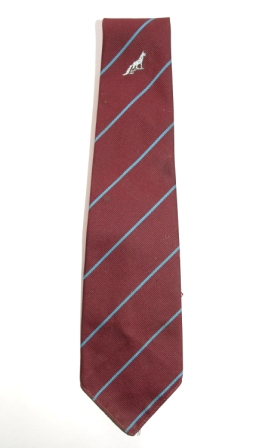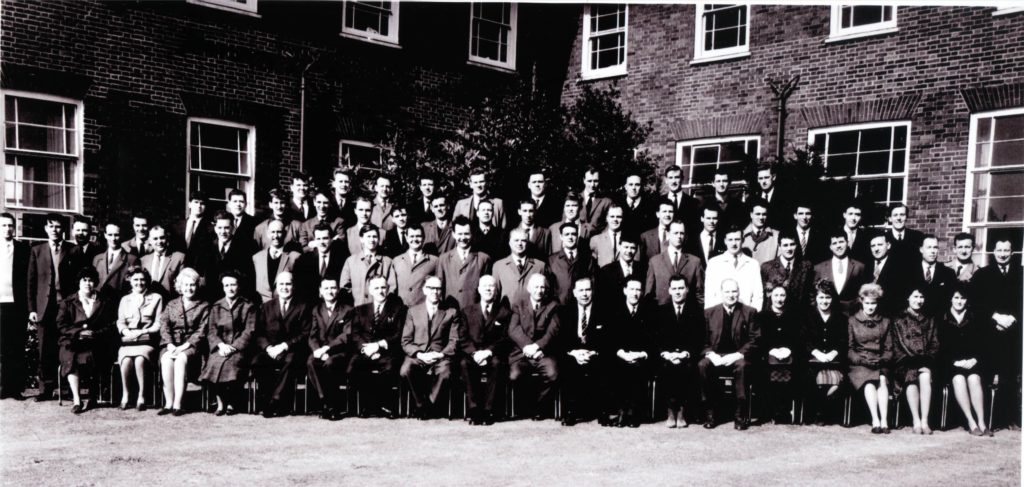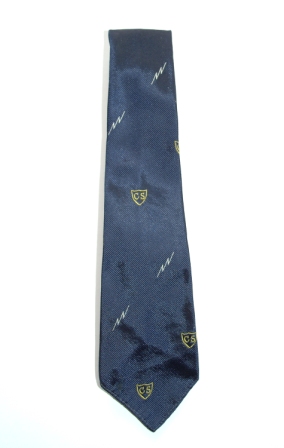COMMANDO SQUAD by eric hyams, retired
Back Row left to right, 93 A Gray, 193 A Morrissey, 198 B Collins, 125 B Turnbull, 199 C Pickett, 331 A Kinsella, 200 A Holliday, 73 B Green, 69 C Egdell, 85 C Moseley, 298 A Flaherty
2nd Row left to right 303 E Salisbury, 93 D Fletcher, 205 D Emery, 106C Tolen,138 C Johnston, 55 G Hynes, 231 E O’Donnell, 148 G Allen, 189 G Leahy, 287 A Jones, 246 G Makin, 233 G Sergison, 188 F Mulloy, 146 B Flynn, 135 F Chard, 267 A Walthew, 160 C Steel
3rd row left to right 146 E Sheen, 95 E Alcock, 152 F Williams, 160 B Rafferty, 250 F Jones,56 D Carter, 143 C Sullivan Sgt 31 C Stephenson, 246 B Mathieson, 53 D Woolfenden, 214 F Carrick, 159 F Cronin, 158 F Foster, 202D Moore, 149 D Elliot, 146 A Pickthall, 134 B Littler, 129 D Bramwell, 307 E Mc.Ateer, Sgt 23 G Hyams, 183 F Whitelaw, 132 D Conway, Sgt 29 A Rickart.
Front row left to right – 97 WP Tickle, Sgt 4 WP Singleton, 52 WP Byrnes, 28 WP Farr, Det.Sgt French, Det.Sgt Edwards, Det.Ch.Insp Hoyle, Det.Ch Supt Sparkes, Deputy Chief Constable Mr Balmer, Det.Supt Davies, Det.Supt Richardson, Det.Insp Bird. Det.Sgt Reddington, Det.Sgt Ralphson, Sgt 10 WP Falloon, 127 WP Ripley, 66 WP Miller, 81 WP Puttick, 24 WP Skelly.

Exceptional circumstances call for exceptional measures. In 1964 crime in Liverpool reached very high levels. The City Centre was being overrun by groups of young and not so young criminals who rampaged through the city streets, running into the large stores, grabbing anything they wished and running off with their stolen property. Larceny (theft): of and from cars and goods vehicles was prevalent. During the evenings the larceny of and from motor vehicles continued: together with shopbreaking, criminal damage and general disorder. These were the exceptional circumstances.
The exceptional measures were that in September 1964 Mr. Bert Balmer then Acting Ch.Con. set up the Commando Squad. He was a very experienced Police Officer: very astute and had the foresight to set up a method of dealing with the problem.
On the first day everyone paraded in a room at H.Q. Hardman Street, in plain clothes, where we were addressed by Mr.Bert Balmer. Then told of what he wanted and expected, especially coming up to Christmas. He talked about the cameras; what a good prevention and detection tool it
would be.
We were the first Force to set up a Squad like this, also to use a camera, in the fight against crime, on the streets. This was to be the forerunner of the Task Force, O.S.D. (Operational Support Division) through to today, Tactical Support Group? The use of cameras has blossomed into a countrywide, crime detection and prevention tool and is also used for other none police matters.
Press were invited but only allowed at the back to so they could see Mr Balmer, D/I Jack Bird and CID officers, for taking photographs but not of any of the other faces. This bit of secrecy added to the proceedings and was used by the press in their reports.
Mr Balmer then told us that we had been specially selected for the task of cleaning up the City centre. We would ‘blast’ the City centre; using cameras, personal radios, our own knowledge and ability to prevent and detect crime. There was to be zero tolerance. He could tell a good tale and spin it out. Went down well with press and media and gave them plenty to write about, which was what he wanted. Good publicity.
I heard later, to foil the Div. Ch Supts off-loading the men they did not want; Mr Balmer had told them he wanted men from their Plain Clothes Sections and other good men. He knew if he just asked for numbers they would take advantage and off load some of their ‘dead wood’.
The squad consisted of 50 Cons and 9 WPs, 4 CID Sgts, 3 male uniform Sgts, of which I was one, and 1 WP sgt. D/Insp Jack Bird, CID Central i/c. We had use of a car (fitted with Ch. Radio), 2 personal radios, and a typewriter. From CID Central a police reserve, as clerk. Last but not least the secret weapon -namely the ‘camera’. We worked out of Cheapside and used the previous Court Ticket office.
They were then divided into 4 sections, two days (10 am to 6 pm) and 2 E.P.s (6pm to 4am) One uniform Sgt per section. They were divided into pairs, not counting W.P.s who joined up with a pair of Con.s each day. A lot of the men were able to pair off as they wished. Others then joined up.
We were paid a CID allowance, to cover any overtime. Were allowed to use the prefix D/C. D/Sgt. Could then be paid the C.I.D. allowance. Also plain clothes allowance.
In the office was a large map of ‘A’ Div. divided into areas with coloured pins inserted to show crime rates, type and street/area grouping. Each pair of officers allocated to a particular area daily.
The crime rate at this time was very high in ‘A’ Div. On a Saturday ‘A’ duty the C.I.D would have a couple of officers in C.I.D. Central, just to take reports mainly of L.U.V. on a Saturday afternoon. Apparently, at times, there would be a queue of people waiting.
Each day, two officers were allocated to use the car and a personal radio. The camera operator had a personal radio, so they could keep in contact. They were the only personal radios we had.
The camera was positioned on the roof of Lewis’s, Ranlagh Street. The operator and monitor were situated in a small cabin/room on the roof, unknown to staff.
The operator only worked 9 to 5. By the time he walked from Cheapside to Lewis’s he was able to enter the store unnoticed. Similarly, at 4-30 he could leave unnoticed.
Mr Balmer always inferred that there were cameras and personal radios in operation. In fact there was only one camera, in a static position and of limited use. It mainly covered the car park bottom of Mount Pleasant, side of Adelphi. It could cover an area of 180’.
However, Mr Balmer used it good effect to get maximum publicity. Due it being in a static position and not of the quality of the present day camera it did not prove to be a good detection tool in itself. The camera led to a small number of arrests but the publicity value was excellent.
During the first week of operation, there were only 12 crimes reported in ‘A ‘Div and we had little success, in the way of arrests but Mr Balmer’s publicity had a profound effect. For a few weeks it remained low but increased towards Christmas, then, so did the arrests by the Squad. I do not have any figures but we made a good impact which pleased Mr Balmer.
Mr Balmer would come into the office about 8/9pm on a Saturday and look at the arrest figures, and was pleased with the impact the Squad/cameras were having. He was already getting daily updates of arrests. He would then remain to have a chat for a few minutes. By this time a lot of the men had brought their own typewriters into the office. Had they not done so, the paperwork could not have been done
The system for attending Court in the Force was laid down. Officers would always attend Prosecutions Dept 9-30am and would be in Court at 10-30am. On ‘A’, duty persons arrested would be in Court the following day. On E.Ps arrested placed before the Court at 10 30 am. On Night duty if arrest made before 2am, would go off duty at 3am and attend Court at 10-30am. After 3-0am would stay on duty and attend Court. I don’t’ know if this was the system when you joined the Force. (I have included this for your information. No overtime paid but time off allowed.)
As it got nearer to Christmas Mr Balmer called a press conference, for more publicity.
He also had the media there to see us make an ‘arrest’, as a result of the camera. Then told the press about some of the other measures we were taking to arrest offenders. Male accompanied by a female officer pushing pram. Another, was that some of the men were going around the City Centre acting as street sweepers (News to us but press liked it)
As time went by, some of the men suggested that if they were allowed to grow their hair long and or beards they would be less conspicuous. The suggestion was put to Mr Balmer who readily agreed and authorized it, thinking it a good idea. Don’t know if they were to be the first officers in Country allowed to do so.
A lot of the officers had cars and started to use them for observation purposes. They would go to a car park or park on the street in a line of vehicles. The use of cars was unofficial but paid dividends.
One evening, one of the Squad was involved in a slight T/A causing damage to the wing of his car. He was starting his annual leave the following day and would be using his car. He went into to the office and told D/Insp Bird, who said he would see what he could do. The officer was later told to take his car to Spekeland Street garage the following morning and see the garage foreman. Mr Balmer had arranged for repair to be carried out. The officer later took his car to Spekeland St Garage, and had the work done. He had a good holiday.
After a few weeks the amount of publicity, about the set up of the Squad and use of the camera drew the attention of other Forces and that of some European Countries. They sent officers to see for themselves and to report back to their own Force/Country.
When visiting officers arrived, the working system would be explained to them and they would be shown the camera in action. Usually a ‘dummy’ run using the camera and two Squad members in the car would be arranged. Sometime they would go out with a pair of Squad members: who would then give them extra information, show them the problem areas and show them their own particular observation points.
If any visitor was present when an arrest was made, which did occur on several occasions, the officer would remain with Squad members to see the subsequent action, i.e. charging of prisoner/s. preparation of evidence etc. They were impressed with the system, particularly the overseas visitors.
On one occasion the long hair and beards caused a bit of an annoyance to Senior Officers in ‘A’ Div.
We were told to parade in uniform the following day, for the return of Liverpool F.C. after winning the F.A. cup. We paraded at Hatton Garden. The Insp. was not pleased with hair and beards; knowing the Ch. Supt was coming on parade. We told him that Mr Balmer had given permission. The next thing was when the Ch. Supt came in. He nearly had an apoplectic fit upon seeing the men. Was not best pleased but Mr Balmer had authorized the ‘uniform’!
The following year the H.M.I. visited the Force and was very interested and impressed. One of his entourage went through the books and set-up of Squad. The H.M.I. then said that we were not C.I.D officers and therefore were not entitled to be paid a C.I.D allowance and said it must stop. This upset Mr Balmer and he then told us we would be paid overtime for the extra time worked, i.e. 2-0/ 4-0am on E.Ps.
On the 1st August 1965, Mr James Houghton was appointed Ch. Con. and Mr Balmer resumed his previous rank. Mr Houghton was happy to leave the Squad as it was for the time being.
During the following year, Sgt Jack Rickart and I arranged a Dinner Dance at Reece’s, Clayton Square. This was with permission of Mr. Balmer. No information was given out about the function and the Manager at Reece’s was asked to keep our identity and date unknown as far as possible. He agreed.
Mr Houghton was invited and sat alongside Jack, for the meal. He asked Jack about the squad. He then said he had given the matter a lot of thought and was going to change the set up. His idea was to use the Squad as a mobile division, in uniform, but some officers could be detailed to be in Plain Clothes. We would have vehicles and C.I.D. officers attached.
They could then be used to go into any division where there was a particular need, such as outbreaks of crime or disorder etc, otherwise would operate in ‘A’ Div. This would radically alter the system we had been working.
Unfortunately, for him, another Force (I think it was Bristol) introduced a scheme similar to what he had thought about. His idea was brought into being a year or two later, in Liverpool.
It was then called the Task Force, with officers from ‘T’ Div to drive the vehicles supplied, two jeeps. Later renamed as the Operational Support Division I think it was later called Tactical Support Group? Present day? I do not know the actual date the Commando Squad was reorganized but I think it was late 1967 or 1968?
In August 1967 I was promoted to rank of Inspector and posted to Bootle. On the same day, D/Sgt John Ralphson was also promoted Detective Inspector. He had joined the Squad as I had in Sept. 1964. John was a very experienced C.I.D. officer; well respected by members of the Squad. He acted as a mentor to many of the young officers and gave them the benefit of his experience. A lot of the Squad later went into the C.I.D. and many were promoted from D/Sgt up to D/ Ch.Supt. having had the benefit and guidance of his and other C.I.D officers, with Squad.
In November 1967 Mr Balmer retired from the Force. (John and I going had nothing to do with it) Here was another very experienced and capable officer who was also respected by persons who came into contact with him. His foresight in forming the Squad and the results obtained were a credit to him and officers working under him.
He certainly instigated a method of working that has been taken up by Forces countrywide since that time. Changes have had to be made to cover present day acts of crime and disorder, with increases of violence and murder. Use of knives and guns were very rare in my day. Protection: a baton and whistle!
I really enjoyed my spell with the Squad. Camaraderie and friendship was great. Hundreds of arrests made; officers, male and female sustained injury as a result of assault but accepted as part of the job.
The only serious one I remember was when two members arresting a youth were attacked with bricks and iron bar, by three other youths. The arrested person and youths made good their escape. One officer sustained a fractured skull and the other minor injuries. The 4 offenders later arrested.
In the early days, some members of the Squad designed a tie. It was dark blue, with a shield emblazoned in gold with letters C S in the centre spaced out along the length of the tie, above each shield there was a ‘streak of lightning’ picked out in white. This was to represent how quickly the members reacted to incidents on the streets. The tie became a prized possession. Mr Balmer was pleased to be presented with one.
About 1973/4, I went back to the Unit (O.S.D.), as Inspector, for period of two years, working out of St Annes Street Bridewell. They had two jeeps, two unmarked cars, one for use by the Insp. Each officer had use of a personal radio. Some detailed for plain clothes duty others to patrol specific areas. Other officers would man the jeeps.
At this time, in Ireland, the internal troubles were at their height. As result of this a sergeant and four officers would parade at 5-30am daily and then go down to the docks to meet the Irish boat arriving. The officers were issued with overalls in order search in and under vehicles. They also had other equipment to aid the search under the vehicles. This was to deter bringing explosives into the country. At 6-30pm each evening another group of officers would attend at the docks.
Times have now changed and so have the methods of working. Different styles of uniform and equipment made to the squads, in order to keep up with modern trends of public disorder, crime, use of knives and firearms.
I am now writing this article in June 2009, nearly 45 years later. Did Mr. Balmer know what he was starting? I don’t think so.
Over the years many changes have been made in the police service, ideas brought in allegedly to improve situations, but they have quickly and quietly been shelved.
According to the old saying, ‘from small acorns big trees grow’. In this instance it certainly has proved to be true.
Eric Hyams
Also see the Operational Support Division page.



